One day in early May, when I was in grade school, I got off the bus and burst into the house, expecting to find my mother busying herself with housework or talking on the phone, but she was nowhere to be found.
“Mom!” I shouted. “Where are you?”
No answer. Then, just as I started to turn on the television to watch a forbidden cartoon (homework always came first), my mother arrived, holding a big bag of green stuff that looked like bits of rolled up fringe.
“What luck!” she exclaimed, emptying the green scrolls into a colander. “I found a huge patch of fiddlehead ferns!”
She was obviously elated. I was wary. Most vegetables served in my childhood home were from a can and boiled into acid mulch. I usually tried to feed them to the dog when my parents weren’t looking. But the fiddleheads were different. They were tender and mildly flavored. It was turning point in my culinary world. Thanks to that taste test, I’ve loved vegetables, and particularly fiddleheads, ever since. When I find them in the woods in early May, I’m as giddy as my mother was, the first time she brought them home.
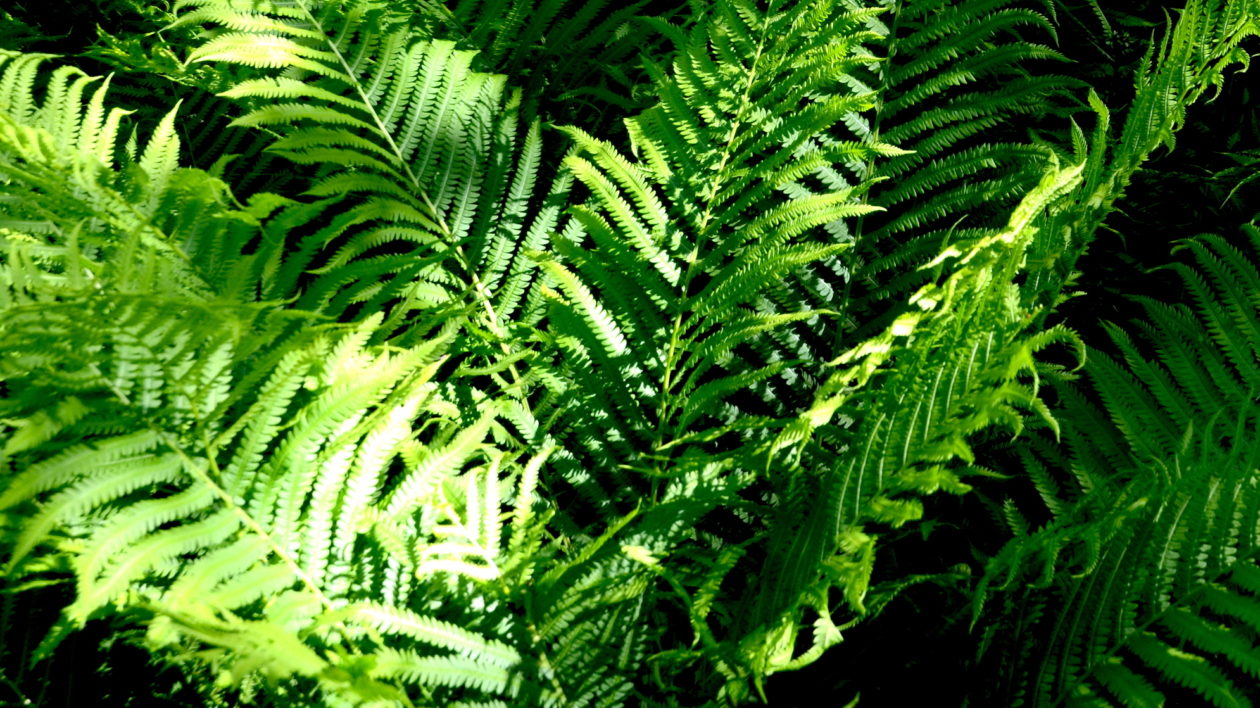
Identification
Fiddlehead ferns are one of spring’s wild delicacies. If you pluck them just after they emerge from their subterranean slumber but before they unfurl, they make a delicious, nutritious addition to any meal, at a time when grocery store vegetables look uninspiring.
Fiddleheads are so named because they look like the decorative scroll on the top of a violin. They are sure sweet music to your taste buds! Eaten within 24 hours of picking, they taste like a cross between a crispy string bean and young asparagus, and they’re packed with Omega 3 and Omega 6 fatty acids, iron, potassium and fiber.
Technically any fern is a “fiddlehead” before it extends its fronds. Many are edible, though the ostrich fern (Matteuccia struthiopteris), which emerges in May in damp woodlands around the northeastern United States, produces the fiddlehead with the gourmet reputation. They are not typically cultivated, though some local grocery stores and farm stands sell them for a short time in the spring.
To harvest them, find a patch in the woods and snap them off just below the “fiddlehead” (round, coiled top). Limit yourself to three per plant. Mature ostrich ferns usually produce seven scrolls. Over-picking will kill the plant.
Beware the Look-A-Likes
Many ferns resemble an ostrich fern. One in particular, the bracken fern (Pteridium aquilinum) is carcinogenic, so it’s important to identify the right one.
The fiddlehead of an ostrich fern is about an inch in diameter with a brown papery covering and a smooth stem. Though only an inch of the stem might poke above the ground, look for a deep U-shaped groove on the inside of the stem (the side under the scroll). If it’s there, it’s an edible ostrich fern’s fiddlehead. If it’s a round stem without an indent, it’s something else.
For simplicity, let’s refer to the edible ones as “fiddleheads” for the rest of this blog. You can find the plant in the summer and fall, too, though they’re two to three feet tall and a full-fledge fern. They might carpet the forest floor in a shady, moist forest beside a hiking trail or along the riparian area of a brook. Just look for the tell-tale u-shaped groove on the side of the stem facing the middle of the clump.
If you find a patch of them already unfurled, remember the location so you can return in the early spring when they are just coming up. Like many other plants, fiddleheads are “ripe” for eating only at a certain time in their seasonal growing cycle. If they go beyond that, they don’t taste good.
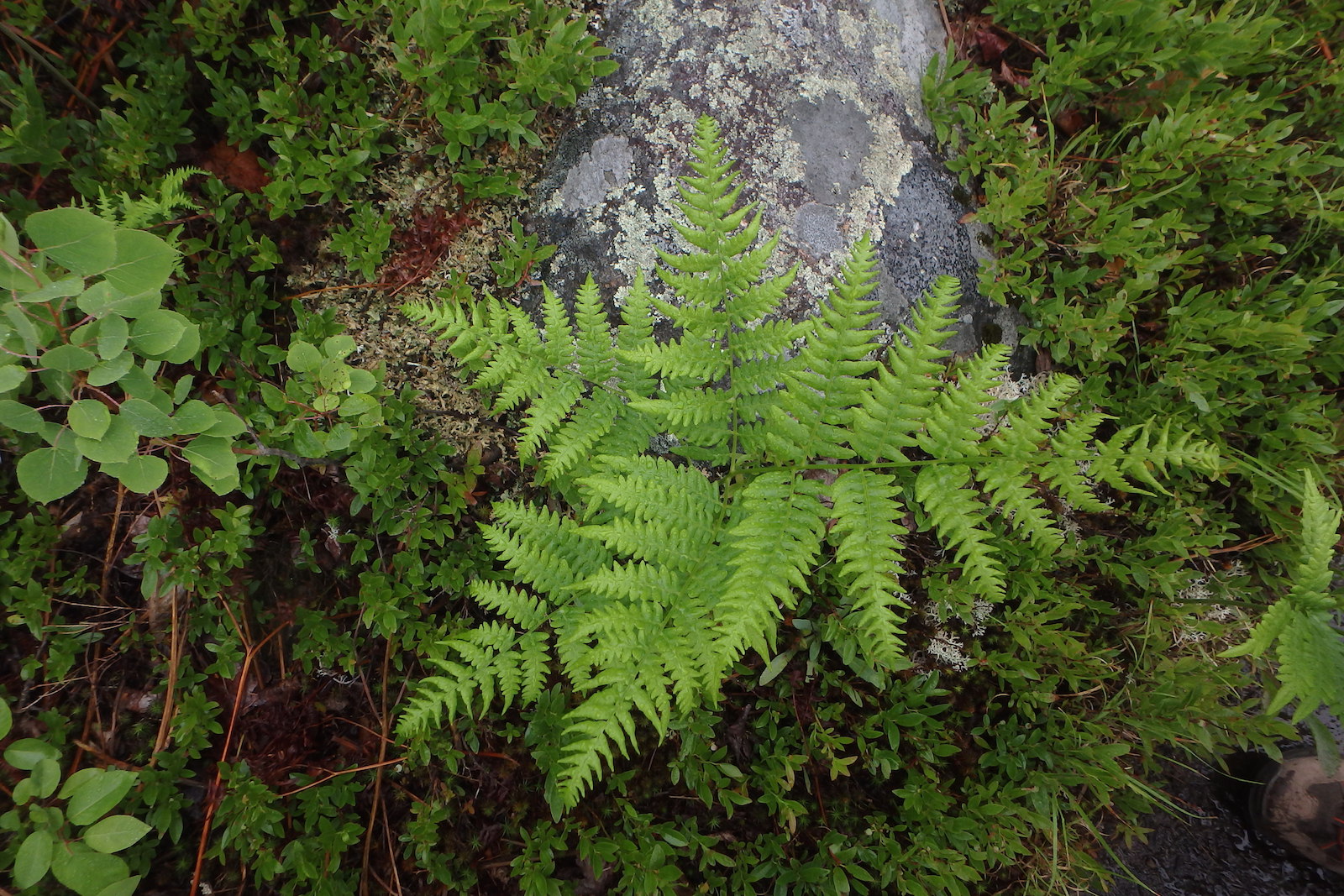
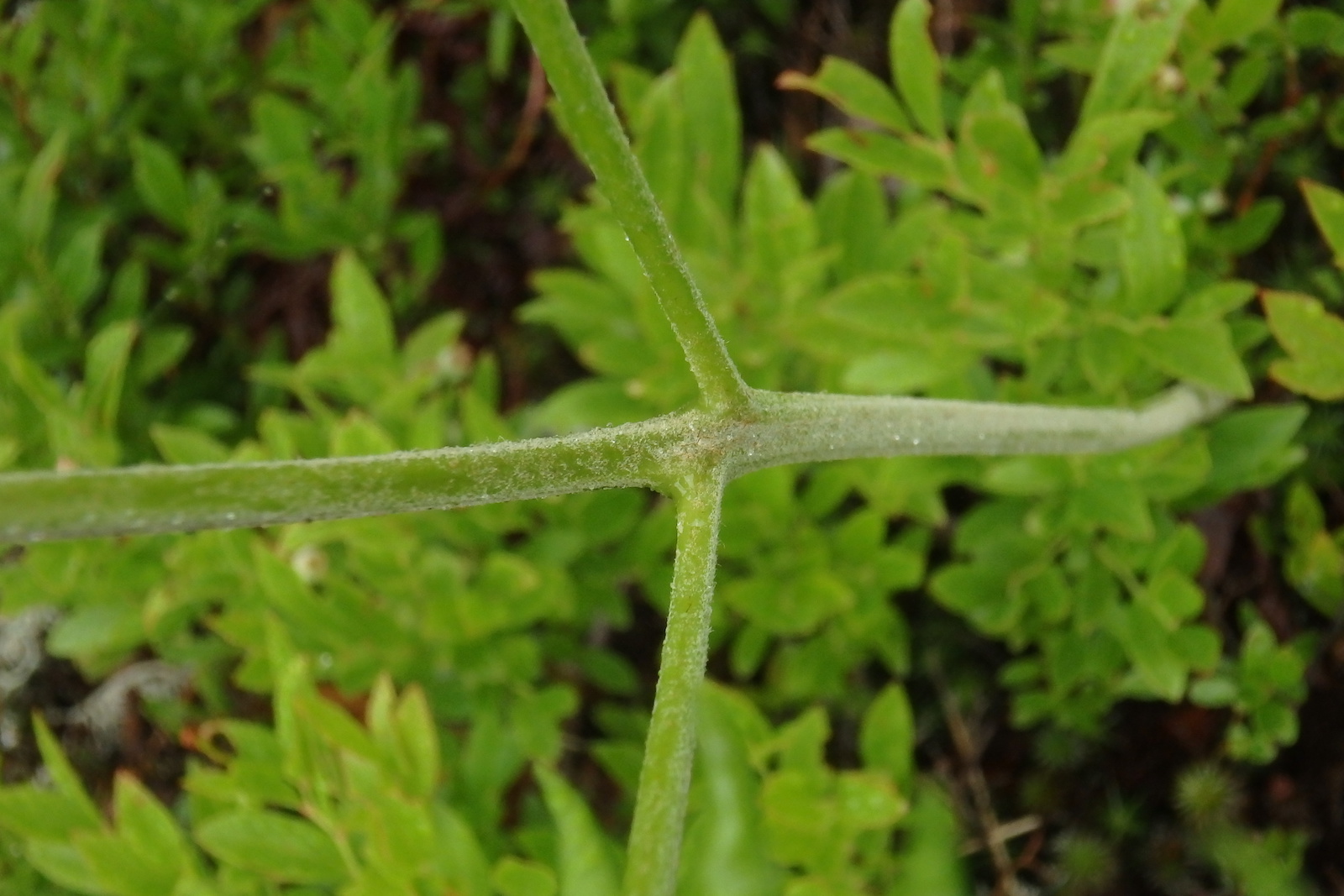
Fiddleheads as Food
Before cooking fiddleheads, remove the brown papery skin and rinse them thoroughly. Some people eat fiddleheads raw though they contain a toxin that can give you a stomachache. Cooking destroys the toxin.
For the best results, cook them as soon as possible after picking them. If you cover them, they might last a few days in the refrigerator, but their flavor won’t be as delicate, and their crunch won’t be as crisp the longer you store them. Ditto if you overcook them.
Fiddleheads are traditionally steamed for 12 minutes or boiled for 15 minutes, and then eaten hot with hollandaise sauce or butter and lemon. They can also be chilled after cooking and then added to salads, but there are many other ways to serve them. Here are several of my favorite recipes:
Garlic Sautéed Fiddleheads
- 4 c. Fiddlehead ferns, trimmed and rinsed
- 2 t. Salt
- 2 T. Vegetable oil or Olive oil
- 2 Cloves garlic, finely minced
- 1 Shallot or ½ small onion finely diced
- 1 T. Butter
- Grated parmesan cheese
Remove the brown papery skin from the fiddleheads then place them in a large pot of boiling water with 1 ½ t. salt. Return to a boil and blanch for two minutes, then drain and rinse in cold water. In a large frying pan, heat the oil over medium heat. Add the garlic and shallots. Sauté for one minute. Add the fiddleheads, butter and remaining ½ t. salt, and sauté about five minutes. Sprinkle with parmesan cheese and serve immediately. Serves 8.
a
- 4 c. Fiddlehead ferns
- 1 lb. Angel hair pasta
- 3 T. Olive oil
- 1 Sweet red, orange or yellow pepper, sliced into fine, short strips
- 1 Onion, diced
- 1 Garlic clove, minced
- 4-6 Mushrooms (morels are best!), sliced thinly
- 2 t. Salt
- ¼ t. Cayenne pepper or black pepper
- ¼ t. Tabasco sauce or your favorite hot sauce
- ¼ t. Oregano
- ¼ t. Thyme
- ¼ t. Basil
- ½ c. Chicken broth
- ½ c. Grated parmesan cheese
- Paprika
In a large pot of boiling water, add the fiddleheads and 1 ½ t. salt. Return to a boil and blanch for two minutes, then drain and rinse in cold water. At the same time, heat a second large pot of water and boil the angel hair pasta al dente as you continue preparing the fiddleheads. When the pasta is done, drain it and place it in a large serving bowl
In a large frying pan, heat the olive oil over medium heat. Sauté the onion and garlic for about one minute. Add the mushrooms and sauté another minute. Add the fiddleheads, sweet pepper strips, ½ t. salt, cayenne pepper, hot sauce, oregano, thyme, basil and chicken broth. Simmer for another five minutes.
Toss the fiddlehead mixture, parmesan cheese and the angel hair pasta together in the large serving bowl. Sprinkle with paprika and serve immediately. Serves 6-8.
Note: Add 1 ½ lbs. cooked shrimp for a delicious seafood version of this recipe.
Dijon Sauce for Fiddleheads
- 1 cup Chicken broth
- 1 T. Flour
- 1 T. Olive oil
- 2 T. Dijon mustard
- ½ t. Tarragon
- Dash pepper
- 1 t. Lemon juice
- ½ c. Sour cream
Heat the chicken broth a small skillet over medium heat. Add the remaining ingredients except the sour cream. Stirring with a whisk, simmer the mixture until it reduces by about half and begins to thicken, about five minutes. Remove the sauce from the heat and stir in the sour cream. Pour over steamed fiddleheads and serve.
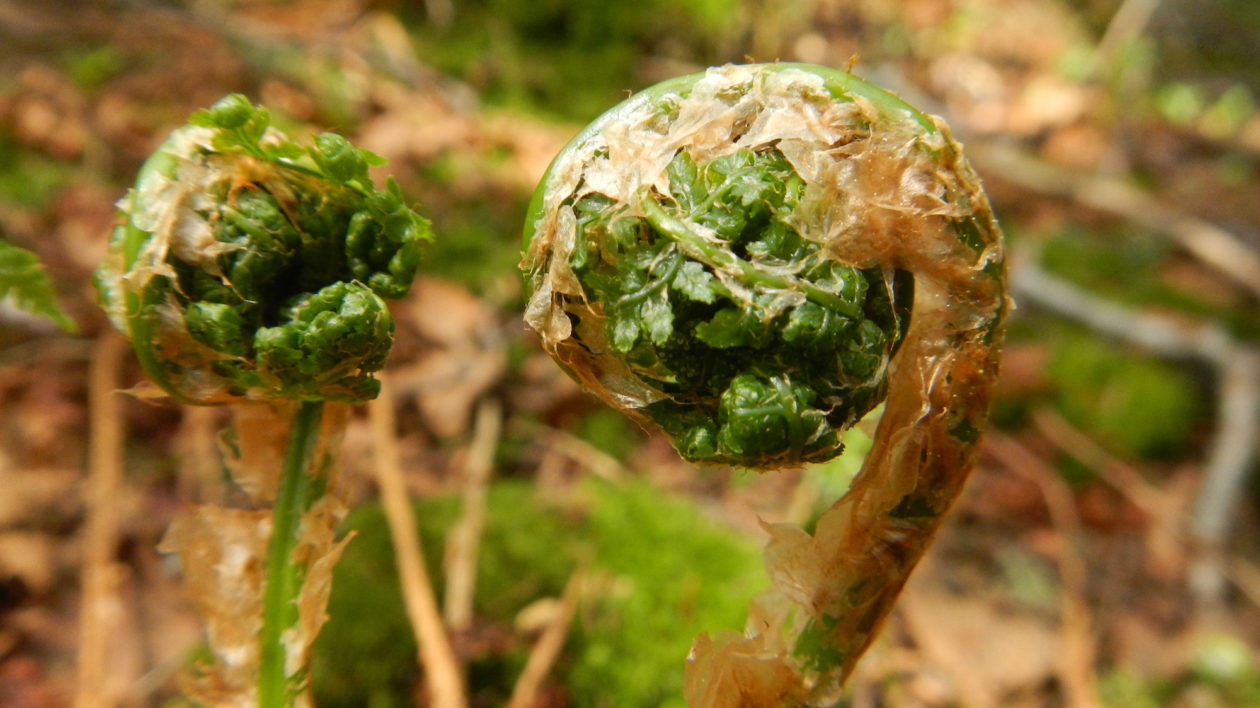
Freezing Fiddleheads.
Freezing is the best way to preserve your fiddlehead harvest for later use. Like other vegetables, they need to be blanched first. Here’s how:
- Rinse the fiddleheads are remove any brown papery skin.
- Bring a large pot of water to a rolling boil.
- Add the fiddleheads (about 4 cups maximum per batch) to the water.
- Return the water to a boil and cook the fiddleheads for two minutes or until their color brightens but they’re still crispy, not soft.
- Drain and place the fiddleheads immediately in ice-cold water.
- Dry thoroughly and place reseal-able plastic freezer bags and freeze.
Hunting for fiddleheads is a fun springtime activity for families, similar to berry-picking during the summer. I’m always on the lookout for them when I hike. If you’re interested in eating locally and off the land, fiddleheads are an easy way to start. Just be sure to look for the u-shaped stem and pick them before they begin to unfurl.
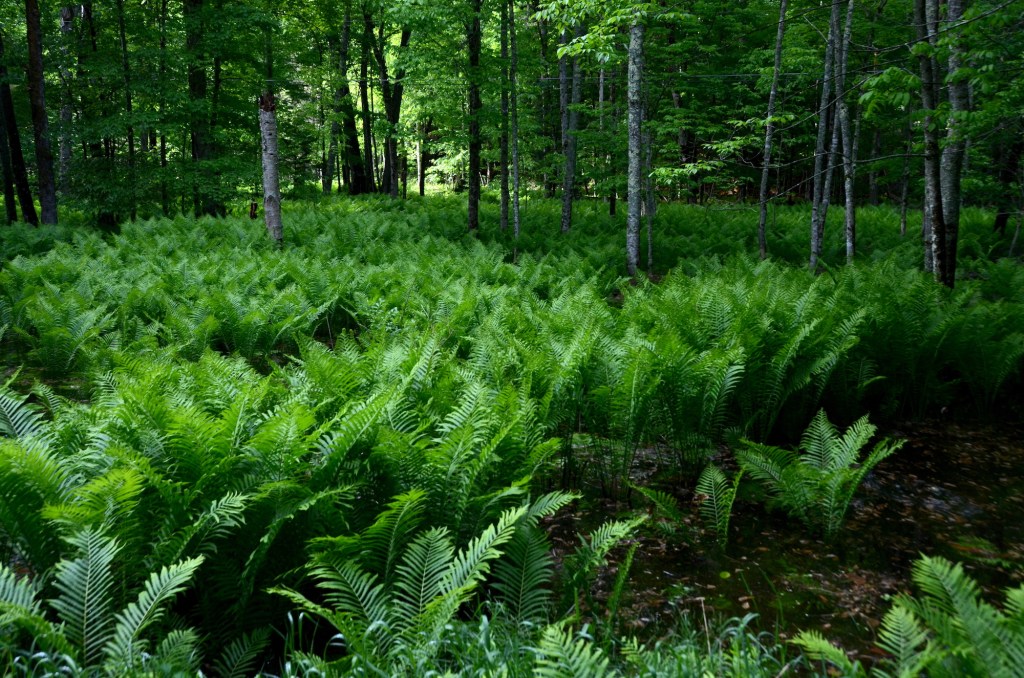



Thank you for this story! As it turns out, we found several patches of fiddleheads while sea kayaking in Alaska early this summer and our friends on the trip showed us the pleasures of fiddlehead ferns — we gathered a bowlful and fried them in butter on Prince William Sound — delicious!
Called kosayi in Korean they are used in Yukaejang soup. Absolutely delicious !